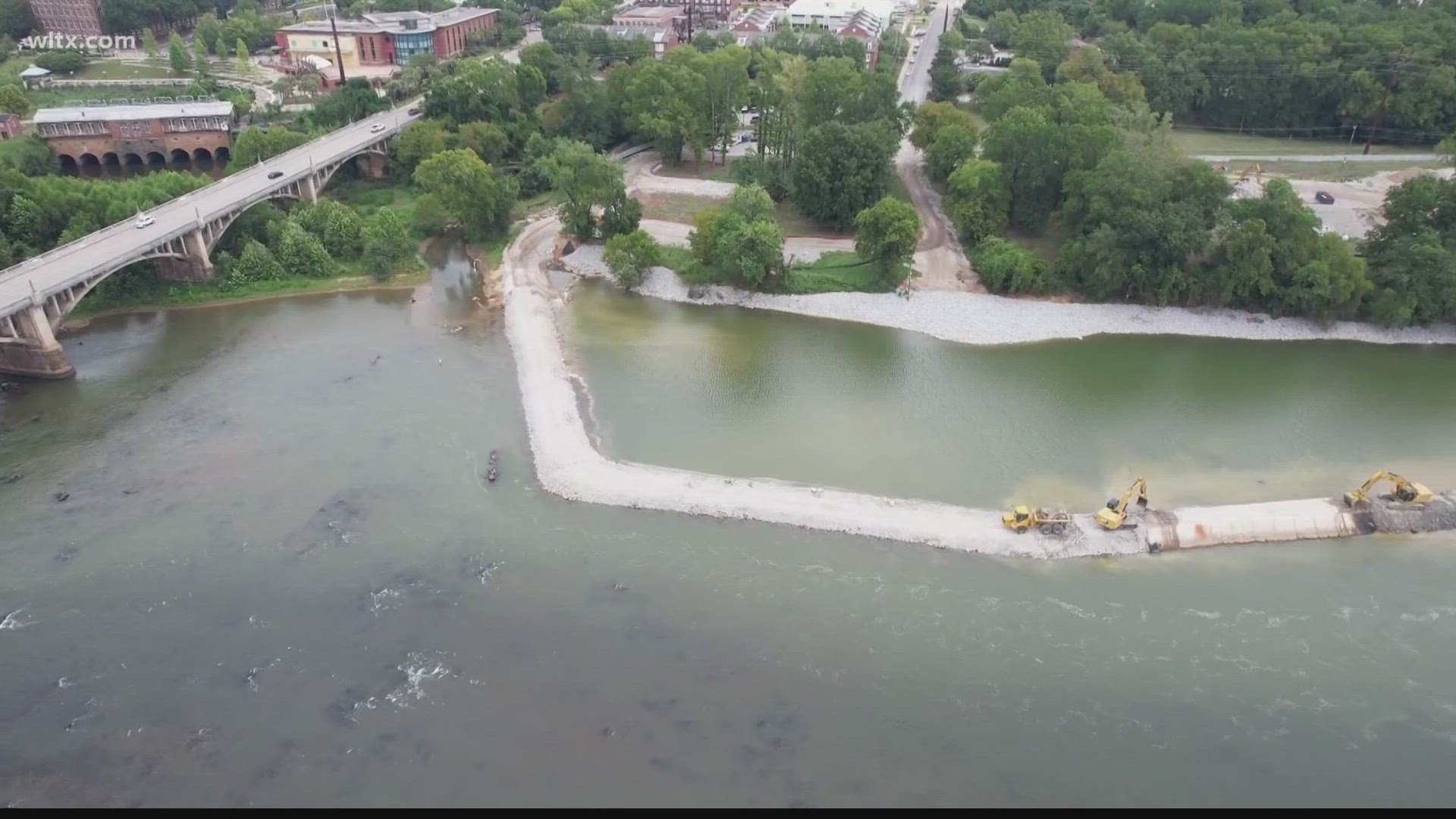WEST COLUMBIA, S.C. — If you’re down at the riverwalk in West Columbia, you’ll be hearing construction noises as the Congaree River cleanup project moves into phase two.
Crew members are breaking down the cofferdam, which is a temporary enclosure that surrounds part of the river that was drained for the cleanup efforts.
This project began at the river a year ago, aiming to get tar out of the water.
“The water was, after all this heat, felt great,” Kris Hurd shares about tubing with his wife, Marianne, and son, Matt. “This is fabulous with the greenway and we saw everyone’s fishing on it. It was wonderful!”
People like the Hurd family come to the river to tube.
“Water was nice. Current was good. Not a bad time at all,” Columbia resident James Ammar says about tubing with his friend Robbie Ruple.
Previously, swimmers and tubers might have found tar on them after getting out of the water. But now, Ammar and Ruple say they’re clean after tubing.
“No tar,” Ammar looks down at his legs.
Ruple agrees, “Tar free.”
That’s because of the cleanup project, which is cleaning the Congaree, formed where the Broad River and Saluda Rivers meet.
“So we've got three rivers right here in downtown Columbia. They're a huge part of our region's history and kind of why the city and the surrounding area grew the way it did. But they're also a huge part of our quality of life. So we have thousands of people that use our rivers for recreation, kayaking, tubing, fishing, swimming, all sorts of fun activities,” Congaree Riverkeeper Bill Stangler shares. “They provide power, they provide drinking water, and they really provide a sense of place that is what the Midlands are all about and the city of Columbia in this whole surrounding area.”
Stangler tells me this effort started in 2010, when a kayaker raised concerns about the tar, which Stangler says came from a coal gasification plant off of Huger Street in the early 1900s.
“A byproduct of that gas was this nasty gooey tar, coal tar. And the power company at the time for decades dumped that tar into a creek behind their site, and that tar oozed its way into the Congaree River where it settled onto the bottom of the river. And it sat there for several decades,” Stangler details. “You had families and kids that were stepping in this tar getting it on them. It would burn your skin, it would itch, it would cause irritation and it contains a bunch of chemicals that you don't want in your river, you certainly don't want sticking to your skin.”
Last May, cleanup efforts began after Stangler says the city spent years coming up with a plan and getting permits to allow for the project.
Then, crew members had to clear the water of any metallic objects that were sitting behind the dam.
“They did find some civil war artifacts including some unexploded cannonballs,” Stangler details about the findings, which are currently being processed and examined by state agencies. ”When Sherman's troops took the City of Columbia in 1865, they emptied out the Confederate armory and they took all these weapons and munitions and they dumped them into the Congaree River.”
After that metal was cleared out, the tar removal process could finally begin.
“About 27,000 tons of material were removed from area one,” Lucas Berresford with the Department of Health and Environmental Control (DHEC) explains.
“This has by far been the most challenging project that I have experienced in my 25 years here with DHEC,” Berresford shares. “There was then a series of investigations done over the next three to five years [after the tar was discovered] to really understand the extent of the contamination. And then start kind of looking at cleanup alternatives.”
Berresford is the manager of DHEC’s state voluntary cleanup program, and says area two is next up. Then, Berresford says the cleanup will be finished.
“It’s very rare that we’re able to take something from a low risk to a zero risk and that’s pretty much what we’re getting at here. There will not be much risk remaining once everything’s been done," Berresford explains about the tar.
It’s leaving residents like Baboucarr Samateh pleased with the efforts.
“It makes me feel like they care. They’re cleaning it up for the city so I think that’s a good thing,” Samateh says.
DHEC says that area two is about a fourth the size of area one. The agency says the goal is to finish construction on the cofferdam by the end of the year so then it can start working on the tar removal.
“This is such a wonderful part of the City of Columbia, and certainly there's ideas about bringing more people to the river, and you couldn't do that if you had to say, ‘Hey, don't get in that river because of this toxic waste.’ So this is a milestone not just for my organization or for people who care about the river, but for our entire community,” Stangler smiles.

